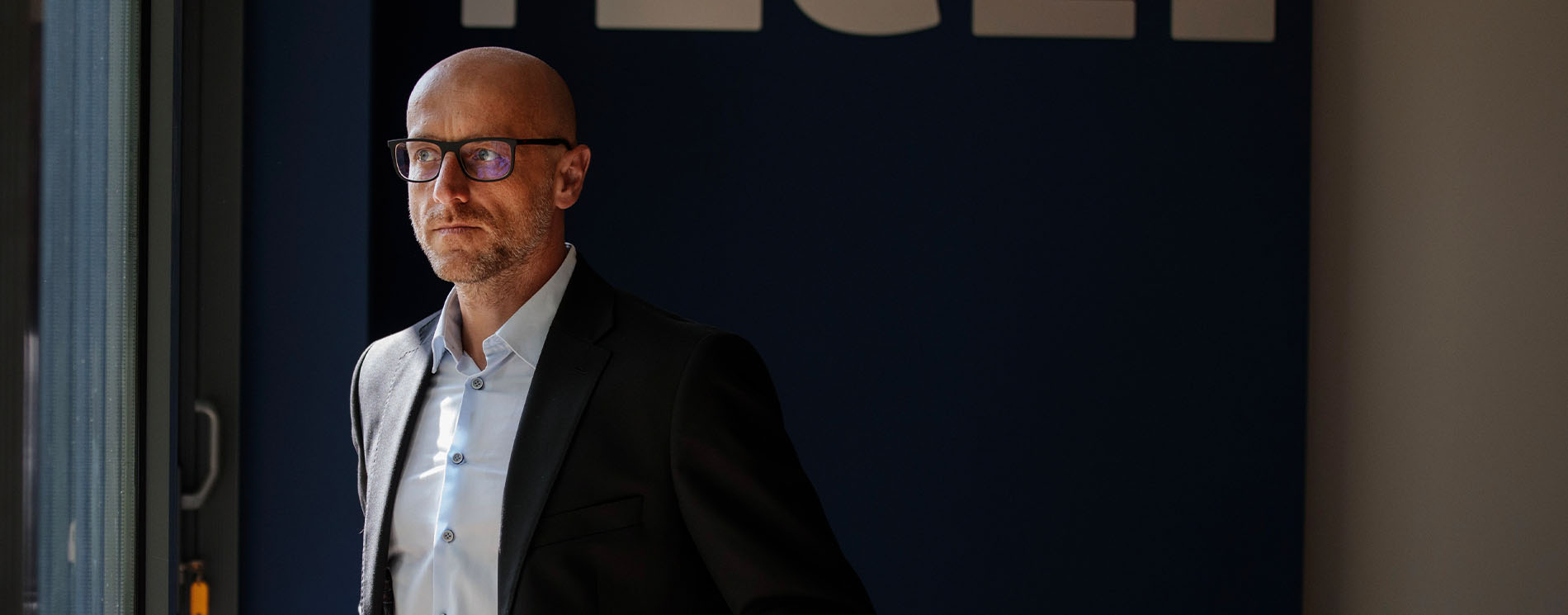The ambition of TECE is to convert all its companies to SAP S/4HANA by the end of 2027, which marks the end of support for the old version of the SAP system. To achieve this goal in a company consisting of several dozen entities, initial preparations had to begin well in advance.
SAP conversion at TECE – well prepared
Migration to S/4HANA
Simultaneous launch in five countries, system downtime kept to a minimum, data migration in just 12 hours, and readiness for future SAP projects achieved nearly two years ahead of schedule. Without a doubt, the migration to SAP S/4HANA at TECE went smoothly. It’s not a coincidence. This success is a result of strong commitment, thorough preparation, a well-thought-out strategy, and collaboration with an experienced partner.
Simultaneous launch in five countries, system downtime kept to a minimum, data migration in just 12 hours, and readiness for future SAP projects achieved nearly two years ahead of schedule. Without a doubt, the migration to SAP S/4HANA at TECE went smoothly. It’s not a coincidence. This success is a result of strong commitment, thorough preparation, a well-thought-out strategy, and collaboration with an experienced partner.
Choice of migration approach
The initial considerations for the S/4 conversion involved executing the project using a greenfield approach involving the system implementation from scratch. In this model, the project duration for nine companies was estimated to be more than three years, with a significant involvement of both IT specialists and key users. In addition, it would be necessary to maintain two production systems in parallel for several years. The overall estimated project cost was very high, and furthermore, it seemed that rolling out S/4 to the remaining companies in the group would be a long-term endeavor, with no chance of completion before 2027. However, the most critical issue identified was the prolonged transitional period, which posed the risk of limiting business development, process optimization, and automation.
TECE deemed these conditions unacceptable. As a result, All for One was invited to submit an offer, which proposed the Bluefield approach combining the launch of S/4 with availability of historical data.
TECE’s cooperation with All for One Poland (then BCC) began in 2015, starting with SAP rollouts from Germany to two Polish subsidiaries. Both parties considered the collaboration successful and have continued it to this day. The involvement of Polish employees in that project was highly valued by TECE. An SAP competence center for the entire group, responsible for system development and maintenance, was established in Strzelin.
The migration approach proposed by All for One received TECE’s approval. In the project running from February to December 2023, employees from TECE’s headquarters in Germany and specialists from the competence center in Strzelin were involved. On the part of All for One, consultants from Germany and the Polish company also participated in the work. Key tasks related to automation and the use of CrystalBridge tools were carried out by consultants from the Digital Transformation Center, a division of All for One Poland specialized in SAP transformation projects.
The result: migration of nine companies from Germany, Poland, Austria, the Netherlands and China completed in less than a year (from TM0 test phase to go live), less involvement of TECE employees, lower project risk. The overall cost four times lower than estimated for the greenfield approach, and a realistic schedule for the next waves of projects for further companies closing before the end of SAP ECC support.
Krzysztof Ogrodowicz, IT Manager at TECE, points out: “After several months of analysis, we came to the conclusion that the processes in the TECE group did not need to be reimplemented, and that the greenfield implementation would take too long. This was not the most advantageous solution for us. Furthermore, it did not enable a rapid transition to S/4HANA for all business units within such a short timeframe. Therefore, we chose the Bluefield approach. The choice of this scenario determined the choice of the partner, All for One.”

The choice of this scenario determined the choice of the partner, All for One.
Performance, or how to migrate data quickly
Initial estimates indicated that due to technical limitations and data volume, exporting data from the TECE database to S/4 would take a staggering 240 hours. Obviously, this was an unacceptable time.
The advantage of the Bluefield approach – besides the methodology – is the rich palette of tools supporting conversions of SAP systems collected in the CrystalBridge data transformation platform. With their help, selection rules and program code were adjusted to reduce the database load, ultimately shortening the export time. Selective data migration in this case consisted in selecting only data related to the organizational units specified by the customer, as well as subordinate data, only if used in the master tables. Additionally, historical data was also migrated.
As a result, instead of 240 hours, the data export time was reduced to 12 hours, which was an acceptable downtime for the business.
Large-scale testing
A prerequisite for a successful launch is reliable testing. This old principle of project management has once again proved true. This task is intended primarily for the company’s employees.
Krzysztof Ogrodowicz sums up: “Over 100 people from all units implemented in SAP participated in the testing phase. To coordinate such an event, it was necessary to use the right tool. TECE opted for the proven SAP Solutions Manager. This allowed us to monitor the progress of the tests and analyze errors in real time. The testing after the first data migration, which was completed with very good results, caused a change in the project assumptions. We eliminated the need for comprehensive retesting during the second data migration and focused only on addressing the errors identified in the first phase.”
In this phase, All for One consultants respond to reported errors, solve problems. Good communication between key users responsible for testing and consultants is crucial. Tools supporting the preparation and implementation of test scenarios were used in testing.
The testing phase consumed a significant portion of project resources, but it was worth it. As the problems revealed in the tests were solved, the downtime of the system during go live was reduced to a minimum. It is worth noting that the number of errors reported during the go live was so small that some of the activities during these critical days could be expedited, which made it possible to adjust the schedule on the fly and move on to the next steps faster.
Big bang go-live
The launch of the system is scheduled for late 2023/early 2024. Downtime (preparation, technical migration, post-migration activities, pre-testing before the launch of the system) lasted from the morning of December 27 to the evening of December 29 (8 PM). The holiday season is associated with a lower workload and number of transactions in the system, and therefore a lower risk of unexpected events interfering with final preparations.
Krzysztof Ogrodowicz: “The chosen method for the launch was the big bang – the simultaneous launch of the system in all entities involved in the migration. This is a more difficult method – requiring excellent coordination of work in several countries. The advantage is a reduced system downtime and company-wide migration time – subsequent waves of the project can be implemented earlier.
Most of us during the Christmas and New Year period like to spend time with our families. With this in mind, we tried to prepare activities in the system in such a way as to minimize the need for key user activity. Two previous simulations of the transition to S/4 confirmed that everything was operating as expected. Using the tools provided to check the consistency of the database and verify the copied data enabled us to reduce the need for activity of individual business people to 2-3 hours.”
A detailed go live plan, which was developed and validated throughout the project, served as the common roadmap during those three days. Individual tasks and sequences of activities were scheduled down to the minute, with specific assignments given to designated individuals. An additional safeguard included “what if" scenarios – backup plans in case unforeseen events occurred.
Most of the companies involved in the project are European, with the exception of a branch in China, where the go live was somewhat different due to time zone and cultural differences (no Christmas break).
“It is not surprising that manufacturing companies dislike downtime. Considering that Christmas is not celebrated in China and there is a 7-hour time difference, we decided to keep access to SAP ECC for as long as possible. We began the data migration work on December 27 at 8:00 AM UTC, which allowed for uninterrupted operations in Shanghai until 3:00 PM. The time without access to the ERP database in manufacturing companies was utilized for physical inventory counts,” says Krzysztof Ogrodowicz.
Simpler, faster, cheaper
The Bluefield approach assumes that several business transformations can be performed in one project. At TECE, together with the migration to S/4, the migration to the New General Ledger, which in the greenfield approach is recommended as a separate project, was performed before the conversion.
The guiding principle was to keep the project scope to an essential minimum to ensure a swift and successful launch, providing users with a fully operational system as quickly as possible. The next year and a half was spent on stabilizing the system, developing and adapting S/4 to the company’s specifics. It was only after this phase that additional rollout waves were scheduled.
The total cost of the project executed with the Bluefield approach was four times lower than the estimates for the greenfield model. This represents a hard fact and considerable financial savings. It is much more difficult to calculate business benefits arising from the shortened project duration.
The Bluefield enabled the organization to achieve readiness for growth and subsequent S/4 rollouts to additional companies at an accelerated pace. Compared to the initial estimates, this represents a nearly two-year reduction. In the second half of 2024, work began in Romania, Czechia, Slovakia, Lithuania, Germany, and another company in China. Several more companies are waiting in line. The completion of the final migration wave is scheduled for early 2027.
Watch a recording of the presentation
CrystalBridge
CrystalBridge is a data transformation platform that enables simultaneous execution of multiple transformation projects completed with a single go-live. It includes predefined scenarios, modules and components to support the automation of data integrity checks and test runs. It holds an SAP certification guaranteeing that transformation projects, including the migration to S/4HANA using the Selective Data Transition approach, will be carried out in an automated, fast, and secure manner.


